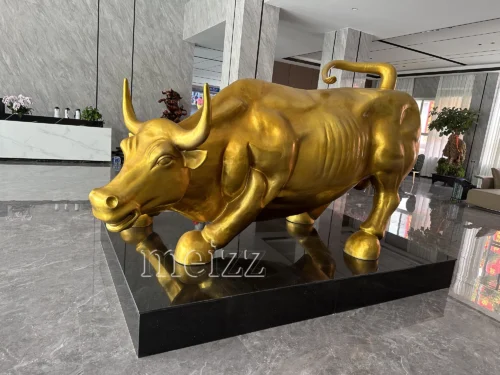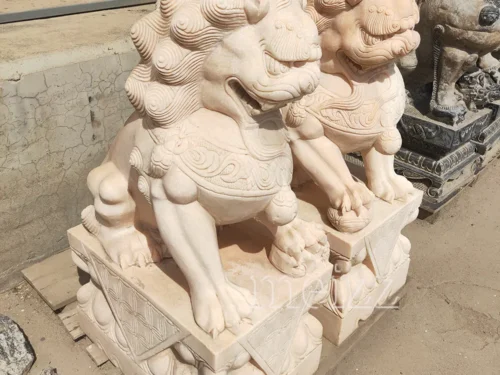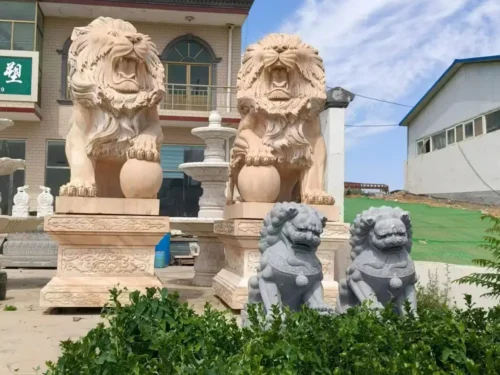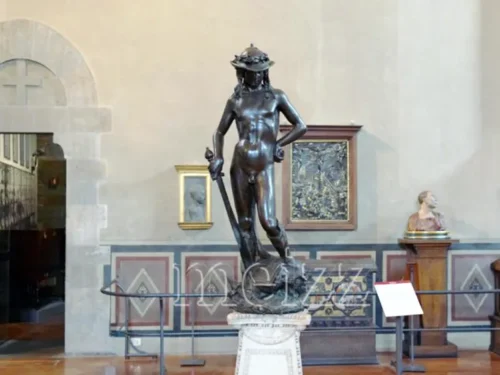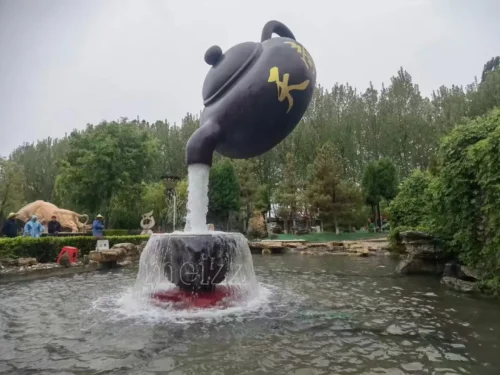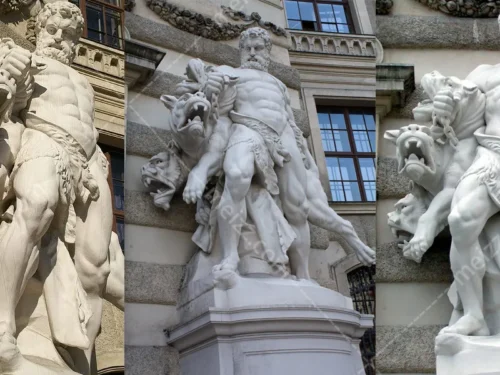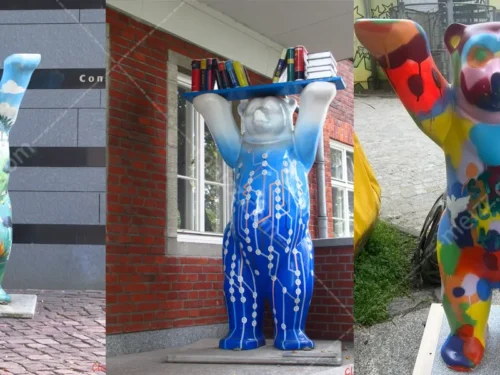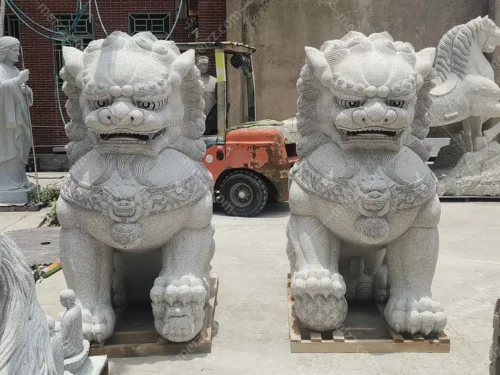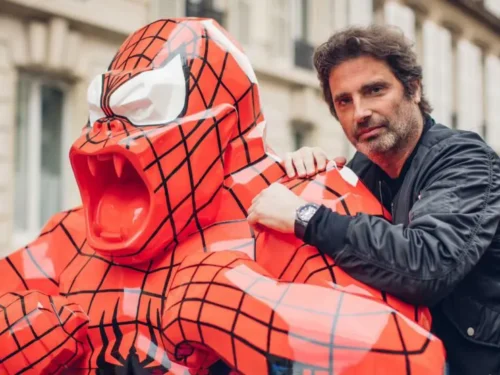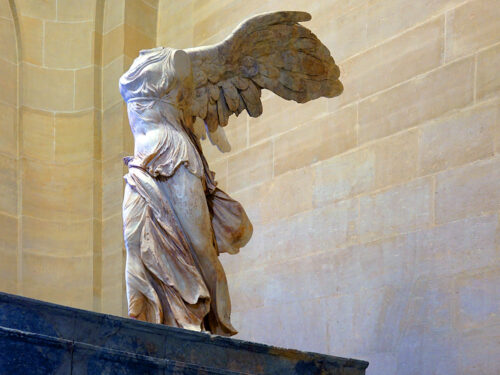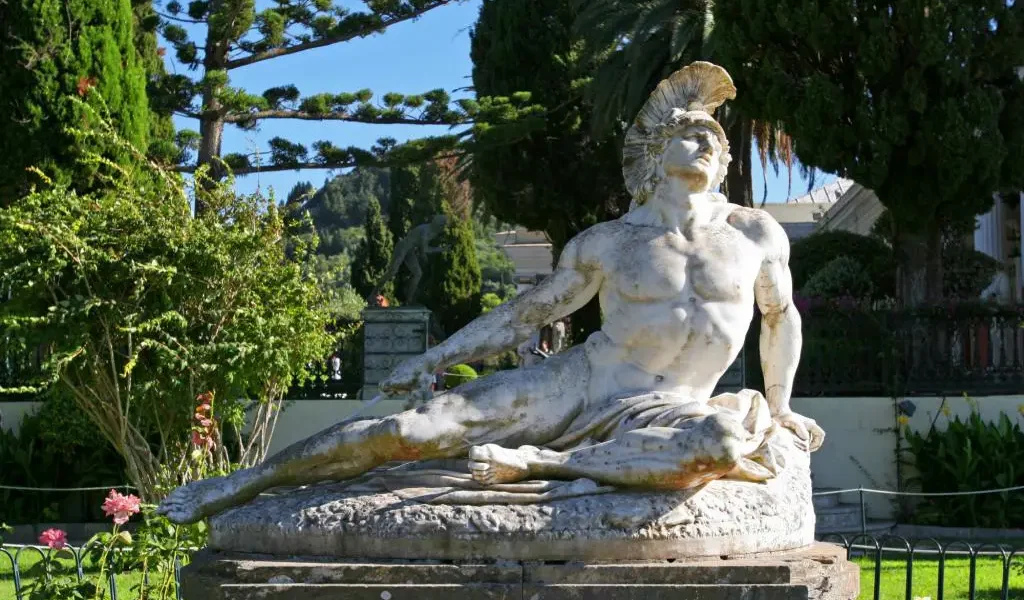

The Roman Warrior Sculpture is one of the most representative art forms in ancient Roman culture, reflecting the society’s high respect for power, honor, and military achievements at that time. These statues are not only a form of decorative art, but also a symbol that showcases the strength and greatness of the Roman Empire. This article will delve into the historical background, characteristics, and significant position of the Roman warrior statue in art history.
The Historical Background of Roman Warrior Sculpture
The Roman Empire was one of the most powerful empires in world history, and its expansion and rule relied not only on advanced military strategies and powerful armies, but also on a profound sense of honor and national pride. The Roman soldier statues usually depict the warriors who fought for the expansion of the empire and the defense of their territories. They are symbols of the empire and the pride of the Roman people.
During the heyday of the Roman Empire, warrior sculptures became common decorations in public places, temples, and aristocratic households. These statues not only showcase the heroic posture of warriors, but also demonstrate their military skills and fearless spirit through finely carved armor, weapons, and combat postures. Many Roman warrior statues were created to commemorate heroes who sacrificed their lives in battle, or to praise an outstanding general or emperor.
Famous Roman Warrior Sculpture
Augustus of Prima Porta Statue
The Augustus of Prima Porta statue is a famous ancient Roman sculpture depicting the first emperor of the Roman Empire, Augustus. This statue was created in the early 1st century AD to celebrate Augustus’ military victory. In the statue, Augustus is dressed in typical Roman armor, with complex mythological scenes engraved on his chest armor, symbolizing his identity as the guardian of the empire.
The statue showcases Augustus’ majestic and confident posture, with his right hand raised as if giving a speech, conveying the authority and decisiveness of the leader. This statue not only showcases Augustus’ personal image, but also symbolizes the power and glory of the Roman Empire.
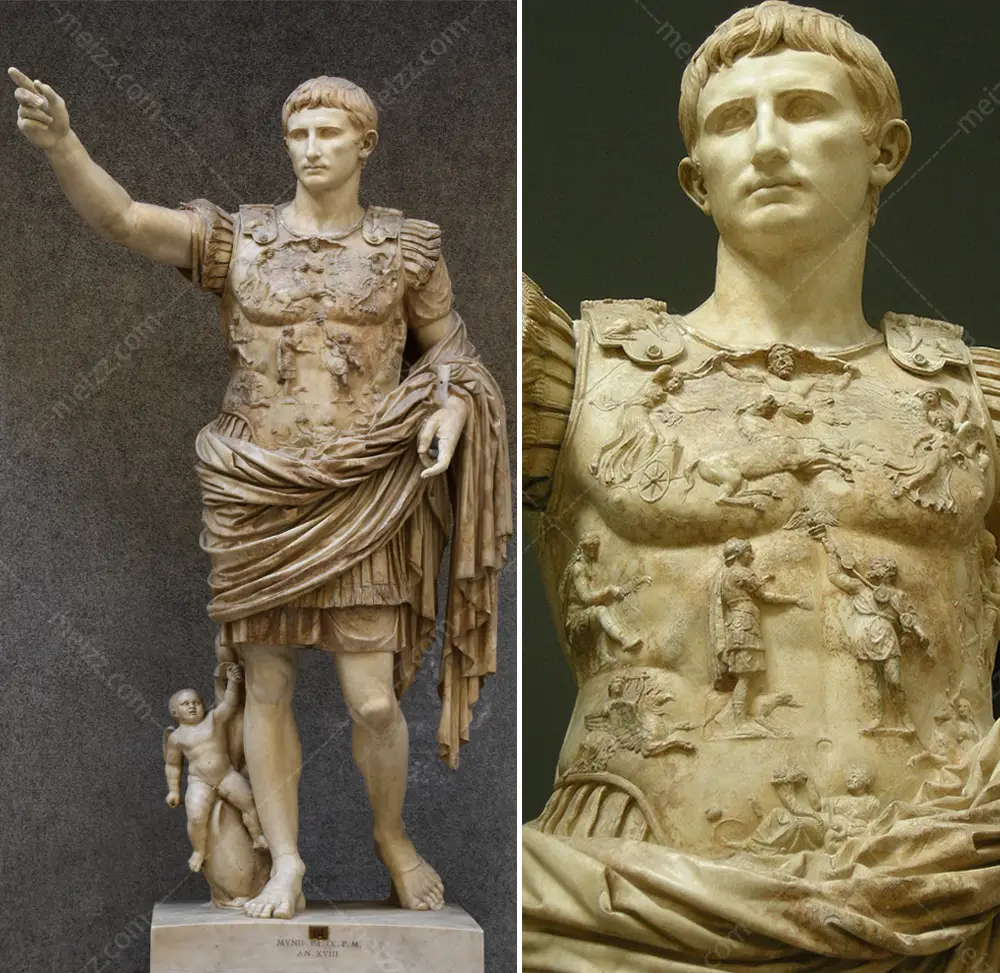
Ludovisi Gaul Statue
The statue of Ludovisi Gauls represents the Romans’ respect and reverence for their enemies, the Gauls, while also reflecting the high value placed on heroism and warrior honor in Roman culture. This statue is renowned for its realistic details and strong emotional expression, and is considered a masterpiece of ancient sculptural art.
The Ludovisi Gallic statue depicts a Gallic man or Galatian Celtic who has just killed his wife and is holding her lifeless body in one arm while holding a sword in the other, preparing to commit suicide. The statue depicts the tragic choice of this warrior in despair of defeat, full of emotional tension, showcasing the extreme ways ancient warriors chose to preserve their honor in the face of inevitable failure.
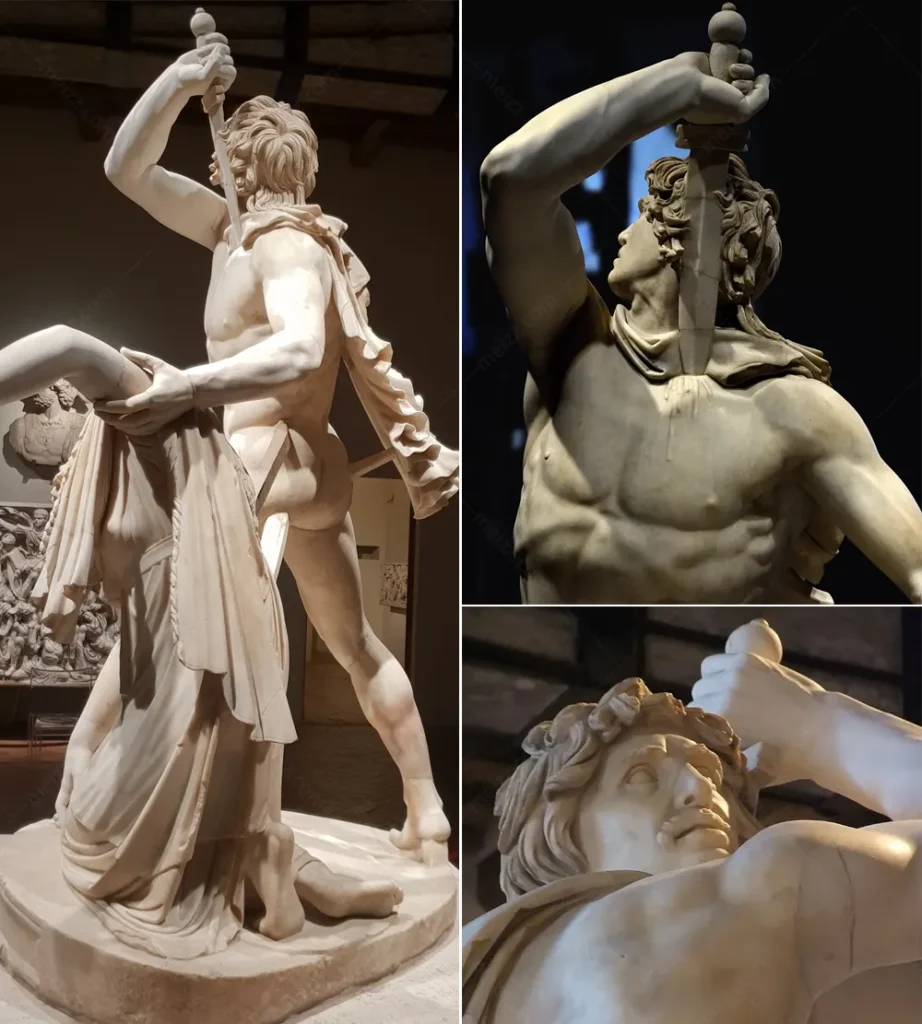
Wounded Achilles Statue
The marble wounded achilles statue depicts the scene in Greek mythology where the hero Achilles was shot in the heel by an arrow during the Trojan War. This statue captures the moment of Achilles’ pain after being injured, as he bends his body and tries to pull out the arrow from his heel with one hand, while gripping his weapon tightly with the other, still maintaining the posture of a warrior.
The statue is renowned for its delicate carving and realistic emotional expression, showcasing Achilles’ heroic spirit in fighting despite the fragility of fate. This work not only showcases the classic stories of Greek mythology, but also reflects the high pursuit of human beauty and emotional expression in ancient sculpture art.
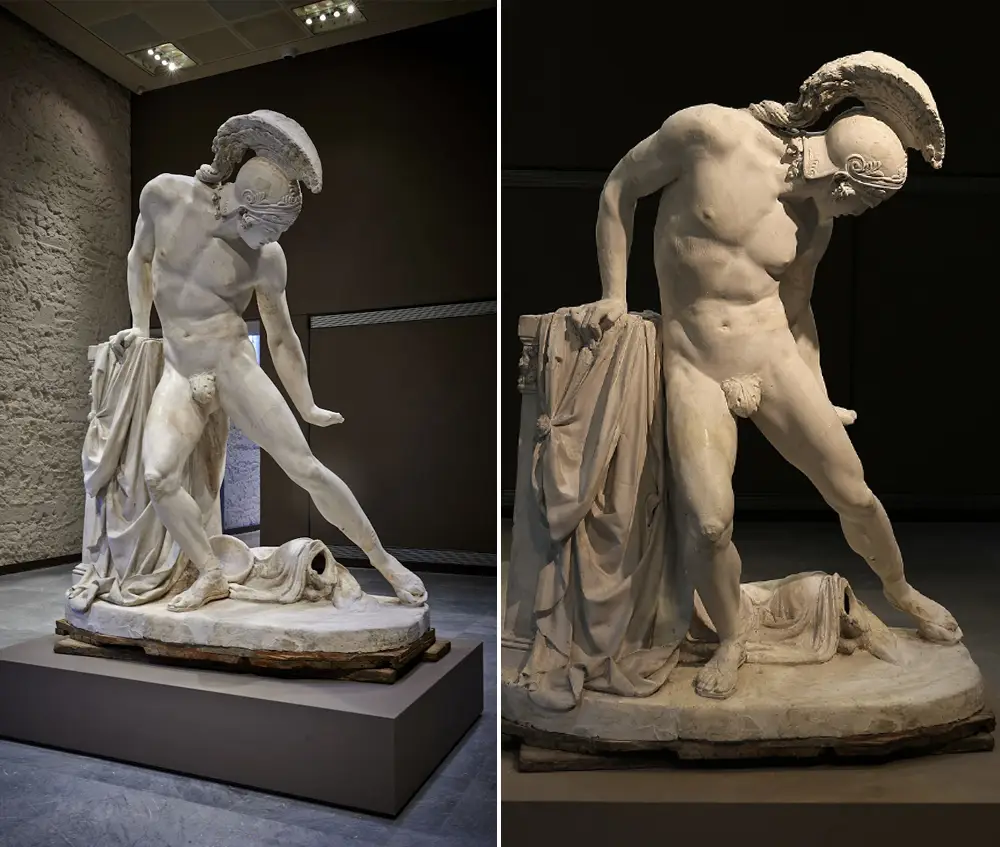
Roman gladiator statue
The Roman gladiator statue depicts a naked man holding a sword, draped in a cloak, and wearing a helmet. The statue showcases the bravery and strength of the gladiator, displaying his imposing aura as a warrior in the arena through a simple yet dynamic design. The helmet and cloak symbolize his identity and status, while the sword in his hand suggests his fearless spirit in life and death struggles. This statue not only showcases the physical strength and combat skills of gladiators, but also reflects the complex attitude towards the profession of gladiators in ancient Roman society, both revered and dramatic.
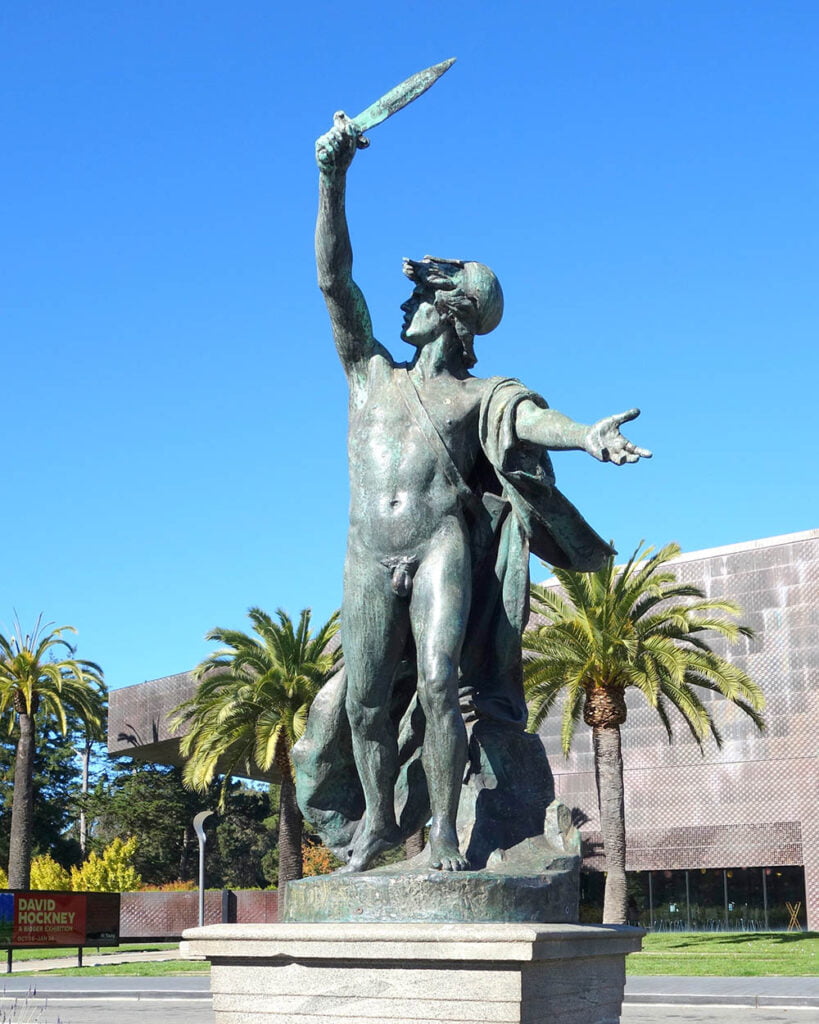
The position of the Roman warrior statue in art history
The statues of Roman warriors not only held an important position in ancient Roman society, but also had a profound impact on the development of art in later generations. During the Renaissance, artists rediscovered and borrowed from the artistic style of ancient Rome, and Roman warrior statues became an important source of inspiration for their creations. The realistic style, meticulous carving techniques, and precise representation of human body structure of these statues have had a huge impact on the sculpture art of the Renaissance period.
Many famous artists of the Renaissance, such as Michelangelo and Donatello, drew inspiration from the Roman warrior statues and created a large number of sculptures with ancient warrior themes. These works not only inherit the artistic essence of Roman warrior statues, but also integrate the pursuit of humanism and exploration of human beauty during the Renaissance period.
The symbolic significance of the Roman warrior statue
The Roman Warrior Sculpture are not only works of art, but also carry rich symbolic meanings. Firstly, the warrior statue symbolizes the military power and ruling authority of the Roman Empire. These statues are usually placed in public places or temples to showcase the strength and invincibility of the Roman army and inspire national pride among the people.
Secondly, the Roman warrior sculpture is also a symbol of personal honor. Many statues are created to commemorate the brave soldiers who sacrificed their lives in battle or to praise an outstanding military commander. These statues not only record their great achievements, but also become objects of admiration for future generations.
Finally, the statue of the Roman warrior also expresses the ancient Romans’ contemplation on death and eternal life. In Roman culture, the death of a warrior did not mean an end, but rather a way to eternal glory. Through statues, the heroic image of warriors is preserved forever, becoming a model for future generations to learn and imitate.
Meizz Sculpture Factory
Our Meizz Sculpture Factory specializes in producing various styles of Roman warrior Sculpture. Whether you want classic Roman legion soldiers, majestic Augustus statues, or heroic gladiator images, we can provide customized services in various materials from marble to bronze according to your needs. Our team has rich experience and exquisite craftsmanship, ensuring that every statue is lifelike, with exquisite details, perfectly presenting the bravery and strength of Roman warriors.

